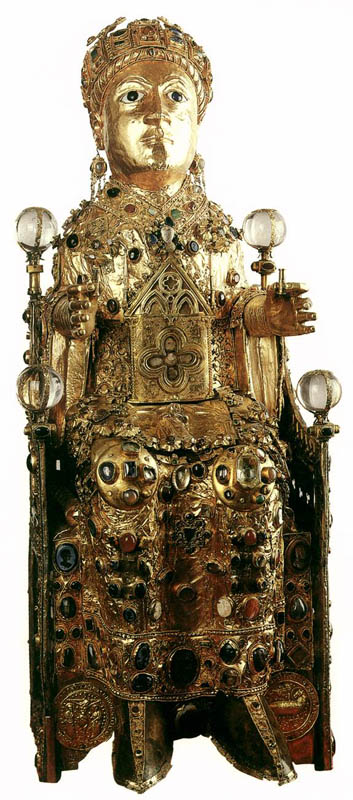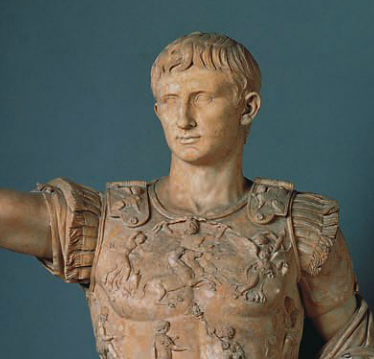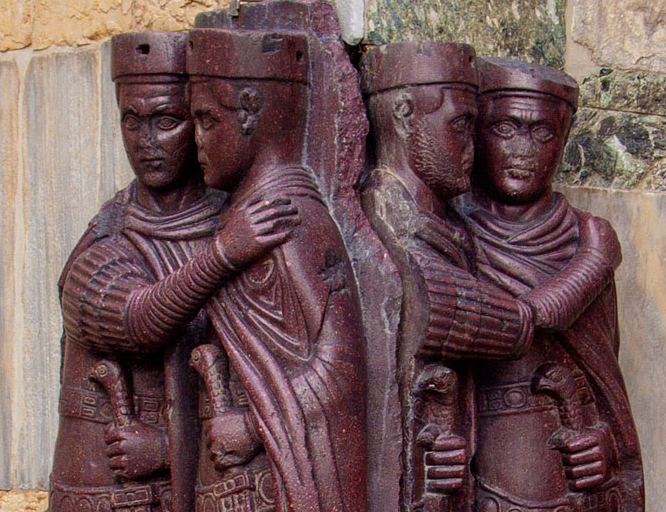
|
Lorna Mills and Sally McKay
Digital Media Tree this blog's archive OVVLvverk Lorna Mills: Artworks / Persona Volare / contact Sally McKay: GIFS / cv and contact |
View current page
...more recent posts
|
This reliquary purportedly contains bits of the skull of a 12-year old virgin girl (Sainte Foy). She was beheaded for refusing to make an offering to the goddess Diana. The figure has an uncanny presence -- the over-sized masculine head was taken from another sculpture.
Reliquary Statue of Sainte Foy, Abbey church of Conques, France, Late 9th or 10th century In the Middle Ages, people would make pilgrimmages to get up close to bits of bodies of dead saints, and when they came to your church, they'd make a donation, so relics were economically important. This relic was stolen from the church at Agen by a monk from Conques, who claimed that the saint wanted to be moved to the Abbey at Conques, which became a major pilgrimmage destination (Southern France). As Pamela Sheingorn claims, in the introduction to her translation of The Book of Sainte Foy, "…to many pilgrims, the reliquary statue was the living saint who could hear and see them and, most important of all, could grant their petitions." (Sheingorn, p.17). This whole business of worshipping relics gave some Medieval Christians pause... wasn't this getting pretty close to idolatry? Sort of ironic that people would be worshipping the golden statue of a saint who had been martyred for refusing to worship pagan gods. Marilyn Stokstad and Michael Cothren bring this up in their text book, Art History (4E). They explain that a medieval scholar, Bernard of Angers, was worried about this particular relic, and he wrote, "To learned people this may seem to be full of superstition, if not unlawful for it seems as if the rites of the gods of ancient cultures, or that the rites of demons are being observed." After he visited the relic, however, and saw how people were interacting with it, he changed his mind, "For the holy image is consulted not as an idol that requires sacrifices, but because it commemorates a martyr. Since reverence to her honors God on high, it was despicable of me to compare her statue to statues of Venus or Diana. Afterwards I was very sorry that I had acted so foolishly toward God's saint." (Stokstad, p.462) |
In other July 4th news, Yoshi Sodeoka makes brilliant, as usual, on AFC with some holiday themed gifs.






|
Augustus of Primatora, early 1st century CE
The Tetrarchs, c. 300 CE
What a difference 300 years can make in the Roman empire. That Augustus looks like he's got it all together. I feel bad for the tetrarchs though. At the time of the tetrarchy, control of the empire was divided into zones each ruled by a senior and a junior emperor. Here are all four leaders clinging to each other. Wikipedia says "The overall effect suggests unity and stability," but I think they look scared. They all have nasty, aggro-bird-head-handled swords. It looks like they are trying to psyche each other up to act like tough guys in the face of adversity. The ones with beards, the Augusti, are more senior, and the younger, clean shaven guys are the Cesars. The artistic conventions are way more stylized than in the time of Augustus. You'd never recognize these dudes as specific individuals. It's a time of strife and deeply charged symbolic imagery. Middle Ages, here we come! |



